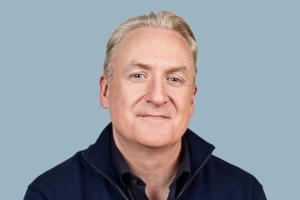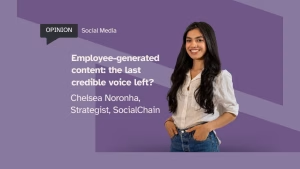By Michael Boccacino, Director of Content Partnerships, TheSoul Publishing
For many brands, best-laid marketing plans have been thrown into disarray by the global lockdown. Out-of-home advertising has dropped off entirely and companies dependent on an in-store presence have been hit hard.
But audiences are resilient, and while new health and safety precautions have altered the ways in which we’re able to physically engage, those behaviors aren’t gone — they’ve shifted online instead. At the peak of the crisis, our 5-Minute Crafts YouTube channel saw typically strong weekend viewing trends every day of the week.
From baking your first sourdough loaf, to the sudden ubiquity of the Zoom call, the internet has been a place of entertainment, connection, and even solace.
Many social platforms are already pivoting their strategies to account for these changes. Back in March, Pinterest moved up the release of a new feature months ahead of a planned launch. Channels able to quickly embrace these new tools are already seeing upticks in engagement.
Right time, right place
Pinterest’s recent roll out of an improved video uploader, a new video tab, and lifetime video analytics empowered our team to find the insights we needed to accelerate our presence across the platform during the Covid-19 lockdown.
Using these tools to manage our initial pages for Pinterest helped us garner some valuable insights: a crafting video about homemade cards that played into the growing appetite for child-friendly art projects, trended well enough to be featured on the “Today Tab”—a new Pinterest feature highlighting popular pieces of content.
This gave us confidence that there was a greater audience for our content. At the beginning of May, we launched 5-Minute Crafts on Pinterest – our first English-language channel for the platform.
Test and learn
Before activating new channels, it’s important to examine viewing trends and ensure you understand user expectations. Creators need to be clear on the value proposition of each medium — then deliver the right content. While there may be similarities and crossovers in video performance from platform to platform, it’s not a case of delivering the same content in the same way. Once we’ve established which genre is a good fit for us, we look at our existing library of content (and upcoming video shoots) to build a custom content strategy.
For example, on Snapchat Discover, one of the top performing editions for 5-minute Crafts was the budget conscious “Extreme ways to save your money”, while recent successes on TikTok have revolved around utilitarian kitchen hacks.
The value of a specific video can be subjective to each platform audience, and regional differences that might seem small can actually drive much of the engagement. Know your audience and use the tools at your disposal to understand what’s valuable to them.
Have fun with popular trends
For many brands it’s hard to adjust fast enough to tie in with every content “moment”. Identifying the sweet spot in your offering and being ready to tap into relevant themes will allow you to stay current. Have a good bank of content before you start, and where possible, allow for flexibility within your plans to fine tune your campaigns.
Reactivity also ties into the channels you choose for your content. While your audience needs to be your first consideration, different platforms have different points of view about themselves and their audiences.
Pinterest thinks of itself as a searchable database full of ideas for people who like to plan ahead, while Snapchat features the kind of localized content previously found in regional newspapers. TikTok, thrives at creating trending moments of community participation.
We monitor how our new viewers behave and engage with our content to ensure we’re delivering the videos they want to see. Maintaining viewer numbers and engagement requires ongoing testing and experimentation to stay fresh and relevant.
Know your strengths
Popular brands will always carry clout, but many have floundered in recent weeks as in-person promotional channels were gradually stripped away. To target today’s digital-first audience, timeliness will be key, as will in-depth knowledge of consumers in their digital environment.
Brand and channel partnerships which pair popular products with organic content allow businesses to become a part of consumers’ everyday lives. It’s this commitment to quality content across a variety of platforms that can build long-lasting relationships with viewers, boosting both the brand and its products.










